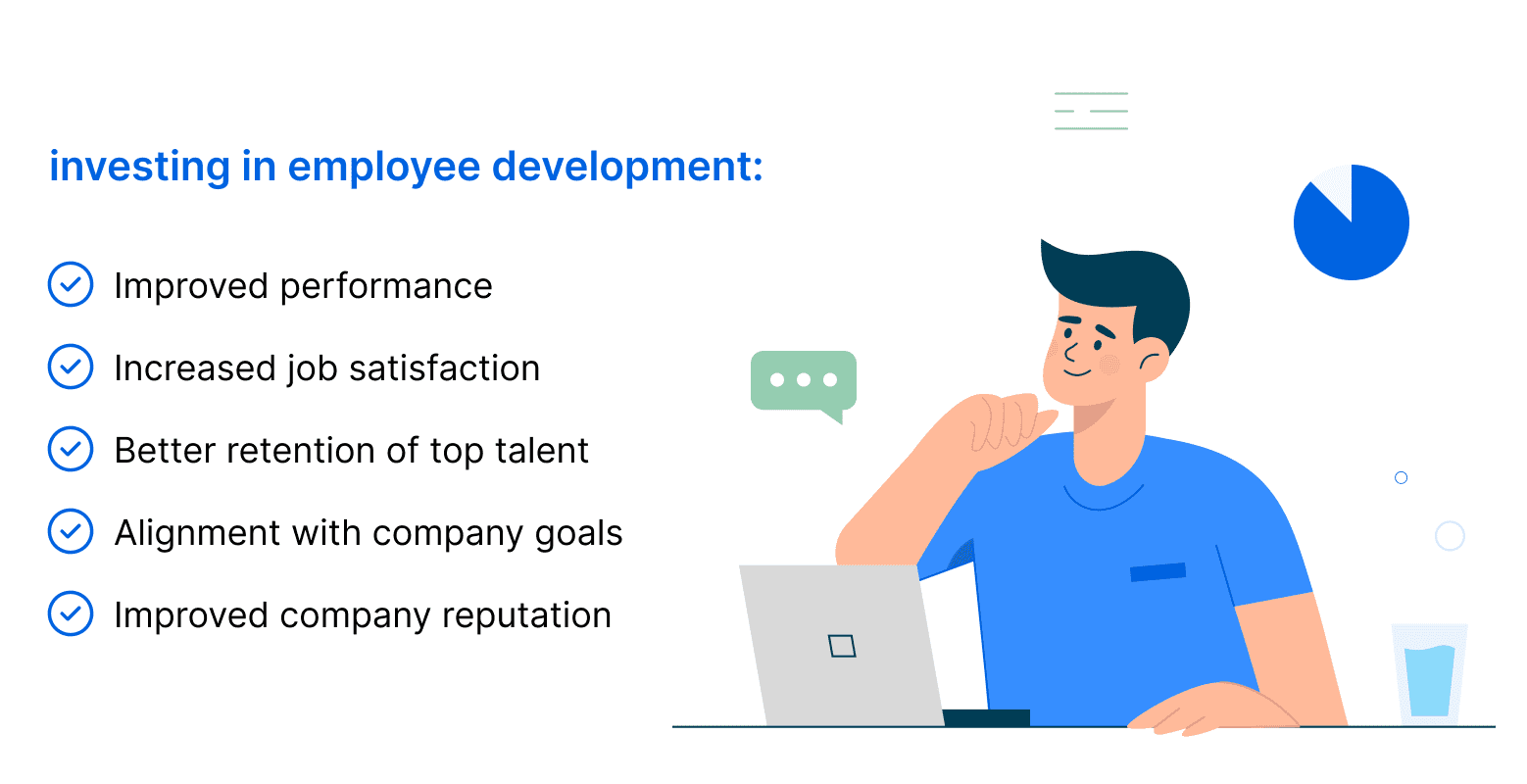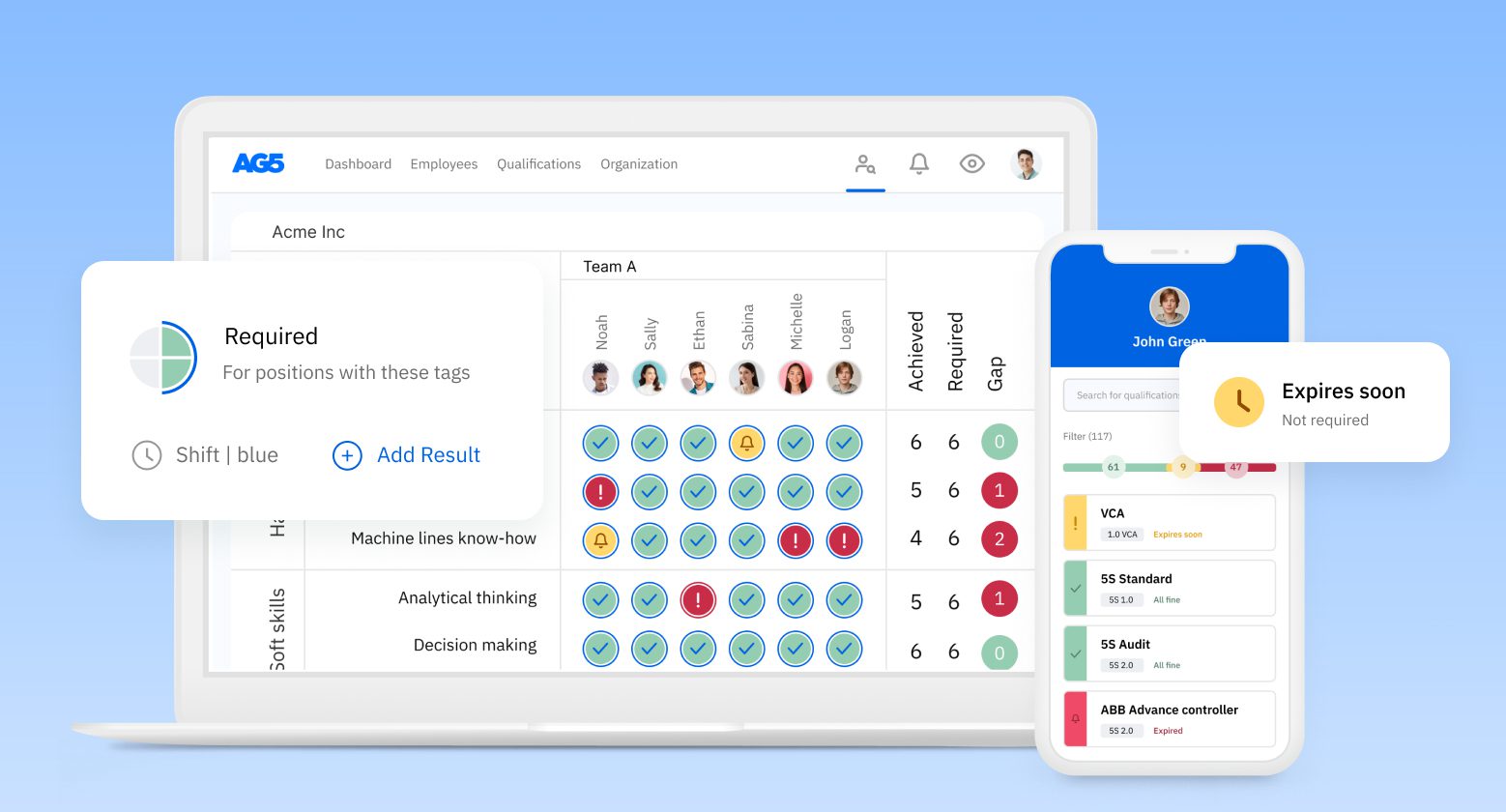The widening skills gap: Investing in employee development
In this article, we explain the widening skills gap and emphasize the critical need to invest in employee development through tailored learning programs.

In a 2023 Willy’s survey, 69% of HR professionals said they believe their company has a skills gap, and bridging it has become a top priority. To do so, many HR professionals and the organizations for which they work are using skills management software as a solution..
The widening skills gap: A complex and dynamic challengeCopied
The skills gap refers to the difference between the skills employers seek and employees’ current skills. This growing challenge is affecting companies across all industries.
For example, a study by the Society for Human Resource Management found that 75% of HR professionals who struggled with recruitment reported a shortage of skills in candidates.
The ideal scenario would be to find experienced candidates with the right skill sets and certifications to join the company, but this is becoming increasingly difficult. The mismatch between the required and possessed skills is often blamed on a lack of job-specific skills training in higher education.
Still, companies will always need to provide internal training programs to bridge the gap. It can be challenging for managers to determine what competencies are missing.
The problems with isolated skills trainingCopied

Traditional approaches to bridging the skills gap often involve providing isolated skills training to employees. This approach, however, is not enough, as there are myriad problems associated with it. Among them:
- The skills gap is not restricted to one particular skill. It is instead a complicated challenge affecting employees and organizations in varying ways. New gaps keep emerging as markets evolve.
- HR must understand that each employee has unique strengths and weaknesses. This means more is needed to identify the skills employees need. Companies must consider the employees’ aspirations, career growth objectives, and other relevant factors.
- The notion that bridging the skills gap can be achieved by providing training only once is misleading. In reality, workforce development is an ongoing process, with opportunities for employees to continuously learn, enhance their skills, and grow professionally.
- Even within a specific skill set, such as IT security, training must be regularly revised to accommodate changes in regulations, new laws and requirements, and the dynamic needs of employees and departments.
The benefits of investing in employee developmentCopied
Investing in employee development has several benefits, including:
- Improved performance and productivity
- Increased employee engagement and job satisfaction
- Better retention of top talent
- Alignment with company goals
- Improved company reputation and attraction of top talent

The future of skills training lies in employee development, and with the help of technology, it is becoming easier to empower them to improve.
AG5’s skills management software can help companies plan for the future and provide a flexible and transparent employee development plan.
Skills management software: A solution to bridging the skills gapCopied
Adopting new technologies such as skills management software helps managers to implement a successful employee development program. Organizations can use skills software to prepare for the future, retain skilled employees, and attract new talent.
Some of the benefits of using skills management software include the following:
- It helps competency mapping and identifies competency gaps by comparing employees’ skills to those required for their job.
- It provides real-time monitoring of employees’ progress, identifying areas where employees struggle and need additional support and training.
- It supports customizable training programs for employees based on their individual needs and career aspirations.
- It provides data-driven insights into the skills gaps, so you can make informed decisions and prepare for market changes.
- It promotes employee engagement by providing employees with opportunities for career development and growth.
- It improves organizational performance by bridging the skills gap, ultimately improving your organization’s performance and productivity.
Schedule a free live demo of AG5’s skills management software to discover how it can help bridge the skills gap within your organization.

